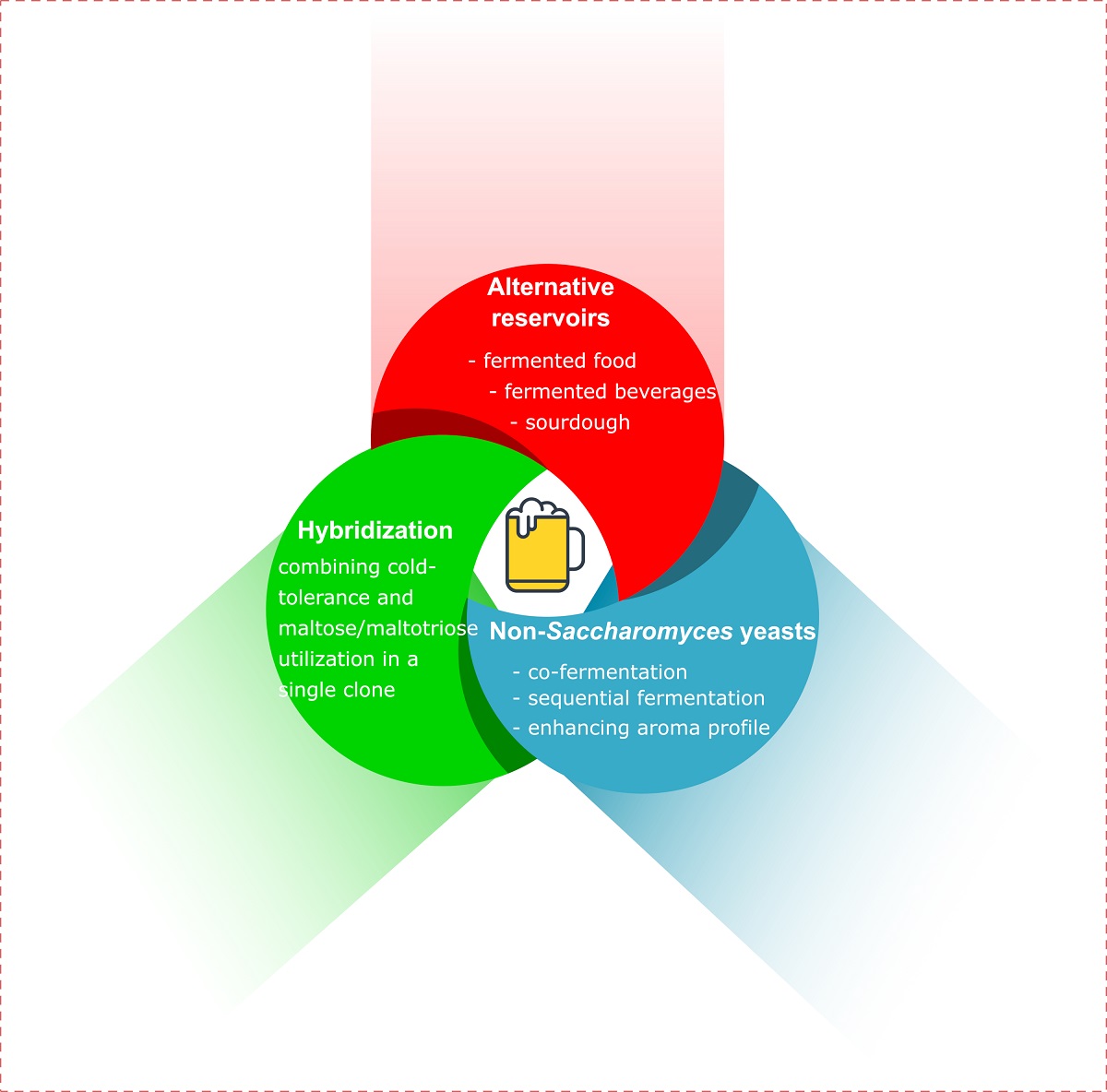Preprint
Review
Designing New Yeasts for Craft Brewing: When Natural Biodiversity Meets Biotechnology
Altmetrics
Downloads
518
Views
397
Comments
0
A peer-reviewed article of this preprint also exists.
† These authors contributed equally to this work.
This version is not peer-reviewed
Submitted:
21 November 2019
Posted:
24 November 2019
You are already at the latest version
Alerts
Abstract
Beer is a fermented beverage with a history as old as human civilization and its productive process has been spread all around the world becoming unique in every country and iconic of entire populations. Ales and lagers are by far the most common beers; however, the combination of raw materials, manufacture techniques and aroma profiles are almost infinite, so it is not surprising to notice that there is a large amount of different beer styles, each of them with unique characteristics. Nowadays, diversification is becoming increasingly important in the brewing market and the brewers are continuously interested in improving and extending the already wide range of products, especially in craft brewery. One of the major components that can have a deep impact on the final product is yeast, since it is able to convert carbohydrates in wort, especially maltose and maltotriose, into ethanol, carbon dioxide and other minor aroma-active compounds. Saccharomyces cerevisiae (top‐fermenting yeasts used to produce ales) and Saccharomyces pastorianus (cryotolerant bottom‐fermenting hybrids between S. cerevisiae and Saccharomyces eubayanus responsible for the fermentation of lagers) are most used in breweries. However, an increasing number of different yeast starter cultures are commercially available, to improve the production efficiency also at relative low temperatures and to obtain desirable and diversified aroma profiles avoiding undesired compounds. Four main genetic engineering-free trends are becoming popular in craft brewing yeast development: 1) the research for novel reservoirs as source of new performant S. cerevisiae yeasts; 2) the creation of synthetic hybrids between S. cerevisiae and Saccharomyces non-cerevisiae in order to mimic lager yeasts by expanding their genetic background; 3) the exploitation of evolutionary engineering approaches; 4) the usage of non-Saccharomyces yeasts either in co-coculture or in sequential fermentation with S. cerevisiae. In the present work we summarized pro and contra of these approaches and provided an overview on the most recent advances on how brewing yeast genome evolved and domestication took place. Finally, we delineated how the correlations maps between genotypes and relevant brewing phenotypes can assist and further improve the search for novel craft beer starter yeasts.

Keywords:
Subject: Biology and Life Sciences - Immunology and Microbiology
Copyright: This open access article is published under a Creative Commons CC BY 4.0 license, which permit the free download, distribution, and reuse, provided that the author and preprint are cited in any reuse.
MDPI Initiatives
Important Links
© 2024 MDPI (Basel, Switzerland) unless otherwise stated






